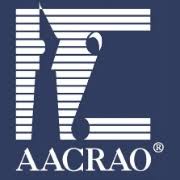North American universities met to discuss transcripts going beyond just grades
Chiara Greco ASSOCIATE NEWS EDITOR
Thumbnail: AACRAO logo. Glassdoor
University leaders from around North America recently met at the University of Toronto (U of T) to discuss the possibility of implementing changes in students’ academic transcripts.
According to The Varsity, this was “the third meeting of the transcript group, which is made up of members of the Association of American Universities,” also known as the American Association of Collegiate Registrars and Admissions Officers (AACRAO). Their intention of gathering was to discuss the future of the traditional transcript and how to improve the way transcripts are representative of students beyond just curricular achievements.
Transcripts have become the defining aspect for students in finding opportunities outside of their completed studies. As such, it is becoming increasingly evident that they should include multiple aspects of student learning, something the new transcript will now be taking into consideration.
As of currently, the student transcript at U of T is a paper record of students’ academic achievements entailing completed courses, grades, and degrees attained. But the future of this current transcript is under discussion, as registrars and academics from top post-secondary schools will gather at U of T to discuss a perhaps much-needed change to the innovation of transcripts in the now digital age. Among those involved in the conversation are the University of Southern California and the University of Nebraska — two schools that have already started the process of implementing this transition to new digital transcripts.
The New Student Transcript
What are the discussed modifications to this new transcript? For one, students can potentially expect co-curricular activities, club involvement, and volunteer work to appear alongside the traditional transcript’s base. As U of T’s Executive Director of Enrolment Services and Registrar Richard Levin puts it in an article by The Varsity, the discussion of changing the transcript will be “looking at how curriculum is evolving and what part of that needs to be represented in the credential that the student receives.”
Students are much more than a simple numerical value as the old transcript under discussion seemed to suggest. Learning expands far beyond simply the credits and grades, so it will be through this meeting that the future transcript will supposedly unfold the many aspects of student life in terms of learning beyond the classroom.
Digitalizing the Transcript
Like most things in the academic world, the transcript is expected to evolve with our digital age. Digitalizing the transcript will be another main focal point of discussion in this meeting and as such, U of T plans to make the switch in 2019 from paper to digital transcripts. Ultimately, changes are expected to progress within the next couple of years. Accordingly, there is still time to wait for this process to be fully initiated.
Digitalizing the transcript will potentially allow for more information to be readily available for future employers. The digital copy, according to Levin in the same article by The Varsity, will be a PDF file containing all of the students’ information. It will also allow for the option of a cover page — an aspect which may potentially help students stand out amongst the slew of others.
This digital transcript will, according to the AACRAO, “allow institutions to quickly and affordably deliver transcripts to other institutions, agencies and businesses that need to verify a student’s degrees and coursework.”
In regards to the concern of the possible eradication of paper transcripts in favour of the digital, Richard Levin addresses this concern in an email to The Mike. Levin stresses that “paper transcripts are not disappearing anytime soon. For now, the digital transcripts are available in addition to the paper transcripts.”
Additional Changes
Beyond digitalizing the transcript, it is also expected to include descriptions and a syllabus of courses which will serve potential employers with knowledge of what it is that a student has gained in terms of learning outcomes, skills, and critical thinking with regard to any given subject. As AACRAO’s Associate Executive Director of Consulting and Strategic Enrollment Management Tom Green states in an article from Campus Technology, this new transcript will “have the capability to make the record three-dimensional.” This seems as though the future transcript will be a huge step forward in representing students as more than just a number.
The implications of changing this new transcript will ultimately lead to a more comprehensive record of student experience. It will be in the next few years that students can expect the full transition of this new transcript to be initiated and put to use at U of T. As for now, traditional transcripts will still be available.



